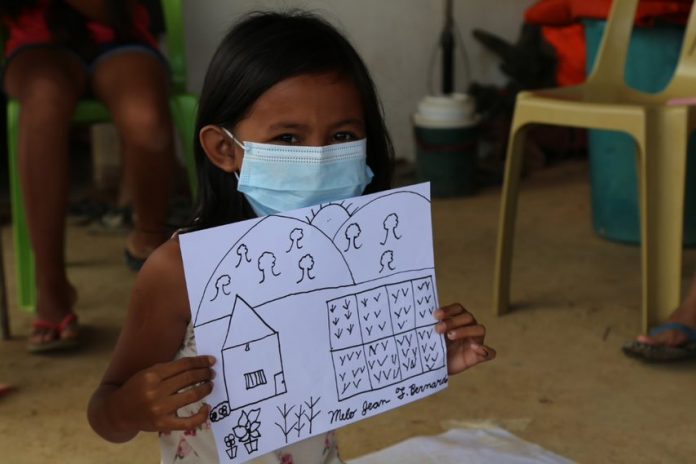Thousands of children in areas most affected by the series of typhoons that hit the country in recent weeks face prolonged hunger, undernutrition, and missing out on classes.
“We are concerned about the situation of 450,000 children who live in fear and isolation, and continue to experience hunger and distress as they miss out on classes,” said Alberto Muyot of Save the Children Philippines.
The organization reported that humanitarian aid workers deployed in the province of Catanduanes, which was devastated by super typhoon “Rolly” last week, reported that children and their families still live in makeshift shacks, as their homes were destroyed.
The group noted that while it could take years for about 1.8 million affected people to recover from the massive devastation brought by “Rolly,” typhoon “Ulysses” (international name: Vamco) hit the same areas in the Bicol region.
Three truckloads of life-saving relief items including hygiene essentials, family emergency kits, and water kits were scheduled to be distributed this week to children and their families in Catanduanes, the most devastated province.
Muyot said the coronavirus pandemic has already interrupted the learning of 22 million students in the country, and children in typhoon-devastated areas in the Bicol provinces continue to lose out on learning due to the destruction of schools and learning modules.
“The poorest and most marginalized children are at risk of losing out on education due to impact of the COVID-19 pandemic, compounded by the devastation caused by the typhoon,” said Muyot.
“The price they will have to pay for the disruption of their education is their future,” he added.
Super typhoon “Rolly” caused significant damage to health facilities, schools and essential services, during the first week of November. Damage to infrastructure reached US$234 million.
According to government reports, 67 health facilities have been damaged, including the government’s main COVID-19 laboratory based in Bicol region and testing was suspended.
The typhoon also damaged over a thousand schools, not sparing those that housed evacuees.
Prior to the typhoon, the proportion of families experiencing hunger in the Philippines was seriously deteriorating from 8.8 per cent in December 2019 to a record-high 23.8 per cent (estimated 2.6 million households) by September, according to a survey done by the Social Weather Stations.









